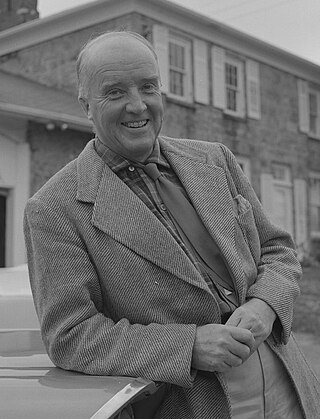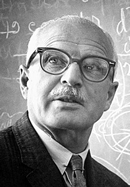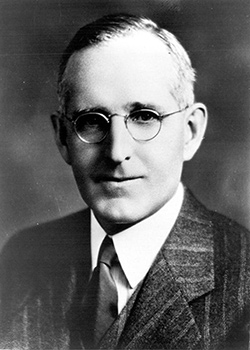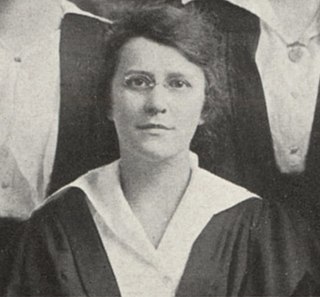
Insulin is a peptide hormone produced by beta cells of the pancreatic islets encoded in humans by the insulin (INS) gene. It is considered to be the main anabolic hormone of the body. It regulates the metabolism of carbohydrates, fats and protein by promoting the absorption of glucose from the blood into liver, fat and skeletal muscle cells. In these tissues the absorbed glucose is converted into either glycogen via glycogenesis or fats (triglycerides) via lipogenesis, or, in the case of the liver, into both. Glucose production and secretion by the liver is strongly inhibited by high concentrations of insulin in the blood. Circulating insulin also affects the synthesis of proteins in a wide variety of tissues. It is therefore an anabolic hormone, promoting the conversion of small molecules in the blood into large molecules inside the cells. Low insulin levels in the blood have the opposite effect by promoting widespread catabolism, especially of reserve body fat.

John James Rickard Macleod,, was a Scottish biochemist and physiologist. He devoted his career to diverse topics in physiology and biochemistry, but was chiefly interested in carbohydrate metabolism. He is noted for his role in the discovery and isolation of insulin during his tenure as a lecturer at the University of Toronto, for which he and Frederick Banting received the 1923 Nobel prize in Physiology or Medicine. Awarding the prize to Macleod was controversial at the time, because according to Banting's version of events, Macleod's role in the discovery was negligible. It was not until decades after the events that an independent review acknowledged a far greater role than was attributed to him at first.

Sir Frederick Grant Banting was a Canadian medical scientist, physician, painter, and Nobel laureate noted as the co-discoverer of insulin and its therapeutic potential.

Charles Herbert Best, was an American-Canadian medical scientist and one of the co-discoverers of insulin.

John William Michael Bliss (1941–2017) was a Canadian historian and author. Though his early works focused on business and political history, he also wrote biographies of physicians Frederick Banting, William Osler and Harvey Cushing. Bliss was a frequent commentator on political events and issues. He was an Officer of the Order of Canada.

The Hospital for Sick Children (HSC), corporately branded as SickKids, is a major pediatric teaching hospital located on University Avenue in Toronto, Ontario, Canada. Affiliated with the Faculty of Medicine of the University of Toronto, the hospital was ranked the top pediatric hospital in the world by Newsweek in 2021.

The Temerty Faculty of Medicine is the medical school of the University of Toronto. Founded in 1843, the faculty is based in Downtown Toronto and is one of Canada's oldest institutions of medical studies, being known for the discovery of insulin, stem cells and the site of the first single and double lung transplants in the world.

Wilbur Rounding Franks, OBE was a Canadian scientist, notable as the inventor of the anti-gravity suit or G-suit, and for his work in cancer research.

James Bertram Collip was a Canadian biochemist who was part of the Toronto group which isolated insulin. He served as the chair of the department of biochemistry at McGill University from 1928 to 1941 and dean of medicine at the University of Western Ontario from 1947 to 1961, where he was a charter member of The Kappa Alpha Society.
Charles H. Hollenberg was a Canadian physician, educator and researcher.

Hospitals in Canada were initially places which cared for the poor as those with higher socioeconomic status were cared for at home. In Quebec during the 18th century, a series of charitable institutions, many set up by Catholic religious orders, provided such care.

Banting House is a former residence and current museum in London, Ontario, Canada. Located at 442 Adelaide Street North, it is known as the “Birthplace of Insulin.” It is the house where Sir Frederick Banting woke up at two o'clock in the morning on October 31, 1920 with the idea that led to the discovery of insulin.

John Gerald "Gerry" FitzGerald was a Canadian physician and public health specialist who was instrumental in the control of diphtheria, first by producing and freely distributing antitoxin, and then in 1924 by using mass production to enable widespread use of the vaccine devised by Gaston Ramon.

Glory Enough for All is a 1988 Canadian television movie directed by Eric Till and written by Grahame Woods, depicting the discovery and isolation of insulin by Frederick Banting and Charles Best. It was the winner of nine 1989 Gemini Awards. The film stars R. H. Thomson as Banting, and Robert Wisden as Best. It is based on the books The Discovery of Insulin and Banting: A Biography by historian Michael Bliss.

The condition known today as diabetes is thought to have been described in the Ebers Papyrus. Ayurvedic physicians first noted the sweet taste of diabetic urine, and called the condition madhumeha. The term diabetes traces back to Demetrius of Apamea. For a long time, the condition was described and treated in traditional Chinese medicine asxiāo kě. Physicians of the medieval Islamic world, including Avicenna, have also written on diabetes. Early accounts often referred to diabetes as a disease of the kidneys. In 1674, Thomas Willis suggested that diabetes may be a disease of the blood. Johann Peter Frank is credited with distinguishing diabetes mellitus and diabetes insipidus in 1794.
Calvin Ralph Stiller, OC, OOnt, MD, FRCP(C), FCAHS, DSc(hon), LLD(hon),, is a highly esteemed Canadian physician, scientist, and entrepreneur. Although retired from a long and distinguished career as a member of the Schulich School of Medicine & Dentistry at Western University in London, Ontario, Stiller's impact on the Canadian health care system remains profound. His work in the area of organ transplantation and immunology, especially, was path-breaking in Canada and elsewhere, as was his creation of and support for various streams of top-level medical research, innovation, investment, and market application.

The Connaught Medical Research Laboratories was a non-commercial public health entity established by Dr. John G. FitzGerald in 1914 in Toronto to produce the diphtheria antitoxin. Contemporaneously, the institution was likened to the Pasteur Institutes in France and Belgium and the Lister Institute in London. It expanded significantly after the discovery of insulin at the University of Toronto in 1921, manufacturing and distributing insulin at cost in Canada and overseas. Its non-commercial mandate mediated commercial interests and kept the medication accessible. In the 1930s, methodological advances at Connaught updated the international standard for insulin production.
Walter Ruggles "Dynamite" Campbell was a Canadian physician and diabetologist, known as the first physician "to administer insulin to a patient."
Andrew Almon Fletcher was a Canadian physician and pioneering diabetologist, known as one of the five co-authors of the famous 1922 paper Pancreatic Extracts in the Treatment of Diabetes Mellitus.

Gladys Lillian Boyd was a Canadian paediatrician at the Hospital for Sick Children in Toronto. She was a pioneer in the treatment of juvenile diabetes. A collaborator of Sir Frederick Banting, she was one of the first physicians to treat diabetic children with insulin.
















